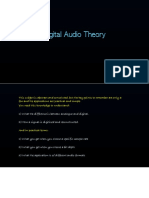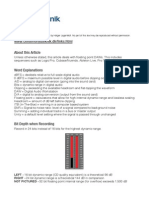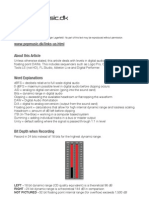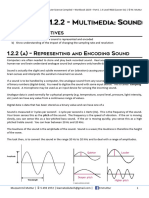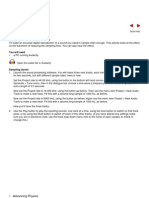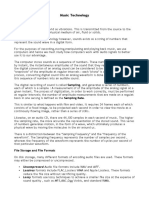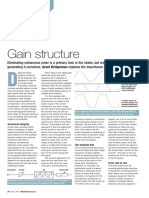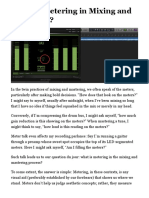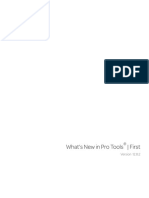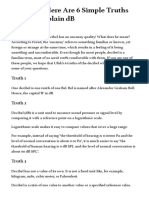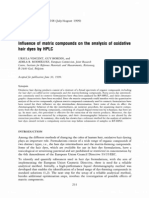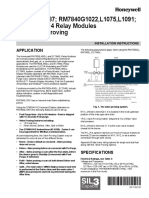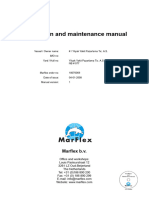0% found this document useful (0 votes)
184 views7 pagesAudio Dithering Explained
Dither is noise that is added to an audio signal before reducing the bit depth. It helps preserve the original signal and removes quantization distortion that occurs during bit depth reduction. When reducing to 24 bits, the type and amount of dither does not matter much. For 16 bits or less, a low-to-medium level of dither with noise shaping is recommended. Dither works by adding random variation so samples have an equal chance of being rounded up or down in a way that preserves the overall signal. This replaces distortion with inaudible noise and improves dynamic range. Dither should be applied anytime the bit depth is reduced.
Uploaded by
CHakornCopyright
© © All Rights Reserved
We take content rights seriously. If you suspect this is your content, claim it here.
Available Formats
Download as PDF, TXT or read online on Scribd
0% found this document useful (0 votes)
184 views7 pagesAudio Dithering Explained
Dither is noise that is added to an audio signal before reducing the bit depth. It helps preserve the original signal and removes quantization distortion that occurs during bit depth reduction. When reducing to 24 bits, the type and amount of dither does not matter much. For 16 bits or less, a low-to-medium level of dither with noise shaping is recommended. Dither works by adding random variation so samples have an equal chance of being rounded up or down in a way that preserves the overall signal. This replaces distortion with inaudible noise and improves dynamic range. Dither should be applied anytime the bit depth is reduced.
Uploaded by
CHakornCopyright
© © All Rights Reserved
We take content rights seriously. If you suspect this is your content, claim it here.
Available Formats
Download as PDF, TXT or read online on Scribd
/ 7










